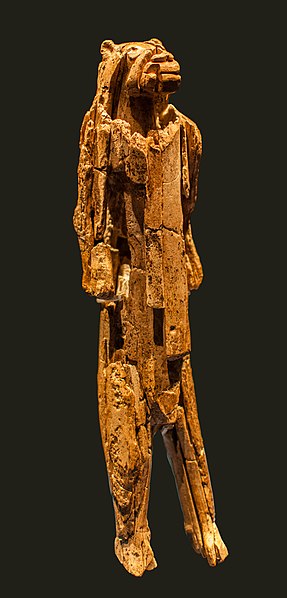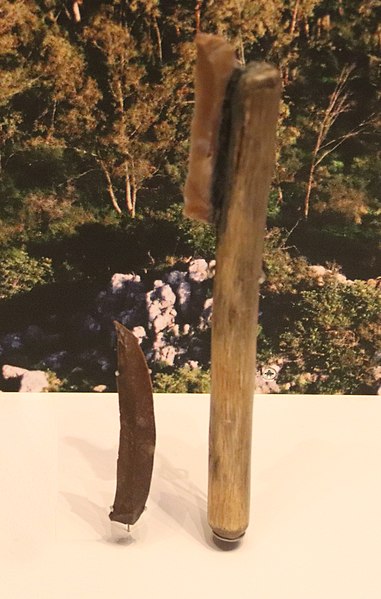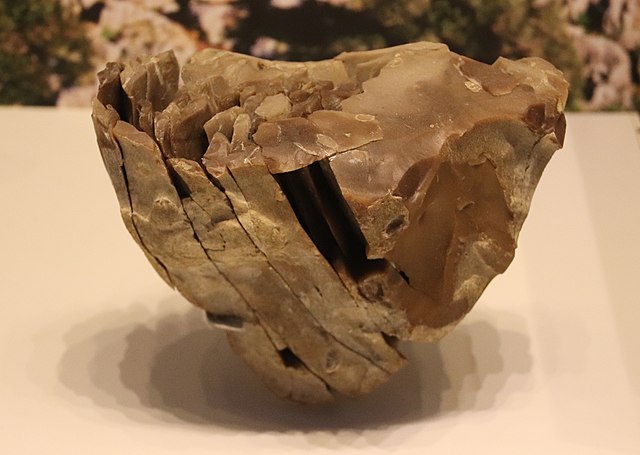Ksar Akil is an archeological site 10 km (6.2 mi) northeast of Beirut in Lebanon. It is located about 800 m (2,600 ft) west of Antelias spring on the north bank of the northern tributary of the Wadi Antelias. It is a large rock shelter below a steep limestone cliff.
Ksar Akil
Layer sequence at Ksar Akil, and discovery of two fossils of Homo sapiens, dated to 40,800 to 39,200 years BP for "Egbert",and 42,400–41,700 BP for "Ethelruda"..
Snail and Mollusca shells found in Ksar Akil
Anatomically Modern Humans known archaeological remains in Europe and Africa, directly dated, calibrated carbon dates as of 2013.
The Upper Paleolithic is the third and last subdivision of the Paleolithic or Old Stone Age. Very broadly, it dates to between 50,000 and 12,000 years ago, according to some theories coinciding with the appearance of behavioral modernity in early modern humans, until the advent of the Neolithic Revolution and agriculture.
Löwenmensch, a prehistoric ivory sculpture discovered in Hohlenstein-Stadel, c. 40,000–35,000 years old
Expansion of early modern humans from Africa
Flint Knives, Ahmarian Culture, Nahal Boqer, Israel, 47,000–40,000 BP. Israel Museum.
Stone core for making fine blades, Boqer Tachtit, Negev, Israel, circa 40,000 BP








